Overview
It is often said that money does not seem to be a direct source of happiness. However, it has been shown as a resource that enables people to engage in meaningful activities, making a salient contribution to happiness. Different authors state that 40% of happiness relies on activities, while only 10% is about circumstances (location, weather or amount of money). Saving is the activity of accumulating and storing money over time with an intention to spend it in the future. Given these propositions, it is interesting to consider the well-being effects of saving, since it can connect one’s present state to a meaningful future state. Current solutions in saving do not actively explore the happiness of individuals, nor do they actively foster meaningful engagement. To explore saving in that sense, The Cash Pack was developed: A family of electronic and customizable piggy banks, composed by a docking device and a smartphone app, that encourages users to reflect upon the purchases they desire and to discover their true value. In this case, the user had created Billy Cash and had established a saving intention, an estimated price and the duration of the savings. Billy will help foster and engage the activity of saving money.
The Meaningfulness of Saving Money was a two-part project conducted within the Delft Institute of Positive Design, supervised by Prof.dr.ir Pieter Desmet and Mafalda Casais, MSc. The first part was a six-month research internship, which resulted in a paper for the 9th Design and Emotions Conference held in Bogotá, Colombia. The second part was a graduation project that took the results of the research internship as a starting point.
Approach
The project started exploring how design could contribute to making saving money more meaningful. First, questionnaires and interviews were conducted to understand a general perception about saving. Then, a study on a piggy bank design case, which sought to determine successful aspects of the piggy bank, as well as strategies that motivate and promote this activity. New insights were depicted to enrich the saving experience and contribute to people’s wellbeing. Those insights were translated into prototypes that helped evaluate and iterate the proposed ideas. In the end, a Human-Product Interaction solution is presented as an alternative for people to save money by reflecting and understanding the importance of saving by discovering its intrinsic value.
Feeding your piggy bank with intentions
Supported by several studies about the relation between money and happiness, the aim of the research internship was to define to which extend design can contribute to the meaningful of saving money. To evaluate this proposition, the BILLEGAS piggy bank was used in order to identify and define those elements that improve motivation, attachment, and commitment. The Positive Design framework was used to help clustering these findings. Two studies were conducted. The first one consisted of questionnaires and interviews about saving.
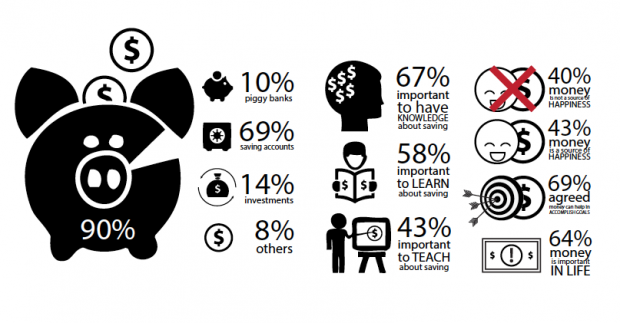
(Fig 1: Results from the questionnaires and interviews)
The second one was the evaluation of the different elements of the BILLEGAS piggy bank, in order to identify which ones had the more impact on the meaningfulness of saving.

(Fig 2: Set up of the “Happy Savings” experiment)
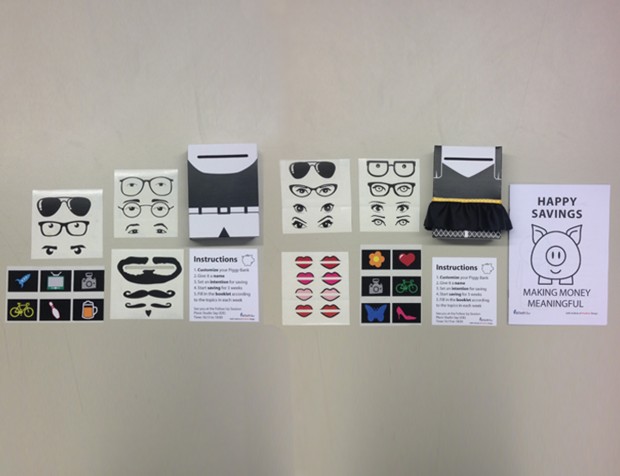
(Fig 3: Detailed image of group 3 piggy bank kit)
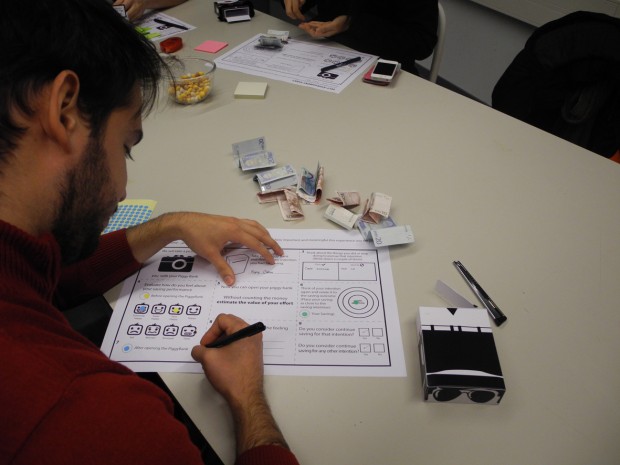
(Fig 4: One of the participants during the closing session filling in the assessment sheet)
Finally, we concluded upon certain important strategies and defined some further directions that we consider important in order to enrich more the experience of saving money. These directions were further explored during the graduation project. Direction 1 (D1) refers to the ability to choose and transform currency into more meaningful references by visualizing the progress of savings. Direction 2 (D2) is about the use of alternative more relatable forms of handling and saving money by allowing users to resemble the use of a piggy bank combined with digital services. And finally direction 3 (D3), is about building a sense of community supported by shared saving intentions and the creation of saving networks.
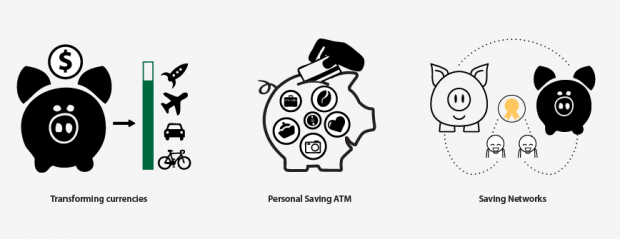
(Fig 5: The 3 design directions that came as result from the research)
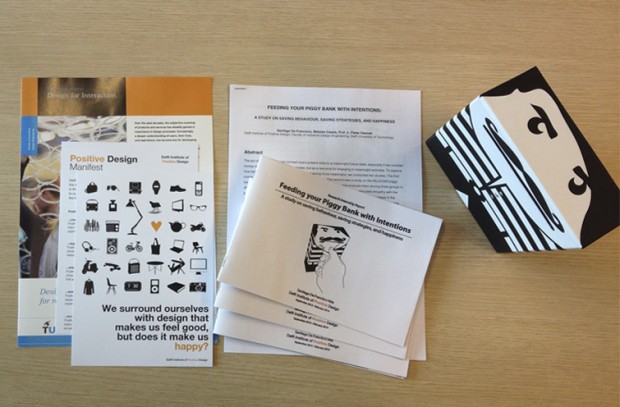
(Fig 6: Result of the research and the elements that were presented to Rabobank)
SWINe (Saving Widget for Interactive Networks) from San De Franc on Vimeo.
The Cash Pack, an electronic piggybank that enables users to discover the value of desired purchases.
The graduation project started with the result from the research internship together with a review of literature from Positive Psychology, Positive Economics and Positive Design. This project was about exploring the meaningfulness of saving money by discovering its intrinsic value, by explaining it, I will try to persuade you to find the importance of being more conscious about your savings, your goals and your emotions. I will bring you through my own quest on finding the meaningfulness of saving money.
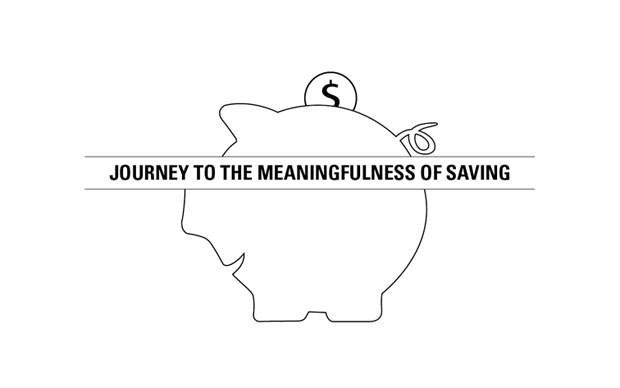 (Fig7: Step by step of the conceptual process)
(Fig7: Step by step of the conceptual process)
I started with a literature research and a study about the different solutions available in the market and placed them in a chart that was used for the ideation and the concept generation phases. Together with those concepts, two user tests were conducted.
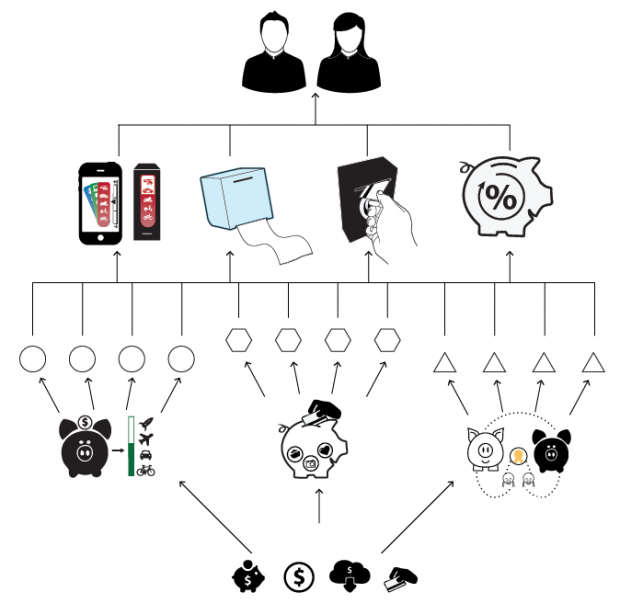
(Fig 8: Stages of the design process)
The users tests aimed to evaluate the proposed ideas and gather new insights to continue unveiling the challenges that took me closer to synthesize this project. In the end a Human-Product Interaction solutions is proposed that encourage people to save money, reflecting and exploring on the importance of each item they are saving for, making an assessment between the price that is paid for an item and the value one can discover within that item.
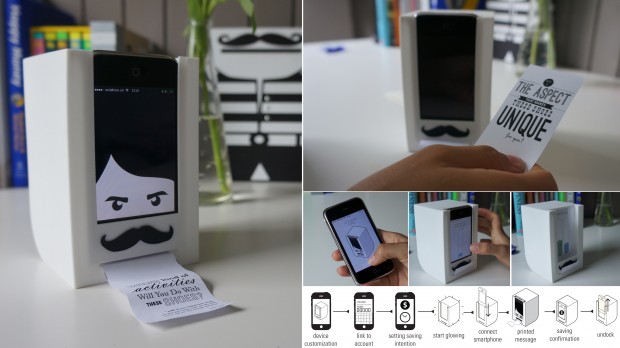
(Fig 9: Prototype of the Cash Pack (Billy) character and the mode of use)
The Cash Pack – Discovering the value of saving money from San De Franc on Vimeo.
Results
Billy Cash, discovering the value of saving money. Saving money is not only about the purchased item but also from what it represents to us. The relevance of this project is based on the idea of discovering the real value and meaning of desired purchases while saving money. Billy Cash enables two moments during the process, one is a reflection on the saving intention, and the other is an exploration of the purchased item. The reflection stage happens while the user saves money. Printed messages containing thought-provoking questions related to the saving intention (e.g., “how can that object empower you?”), stimulate the user to deep dive into the saving goal. These messages are activated every week and printed when the user connects the smartphone to the docking device. The saved amount is calculated according to the estimated amount that the user expects to pay for the purchase. The exploration stage aims to prolong the satisfaction the user gets from the purchased objects, after the saving period. Once the user has achieved the established amount, the system will wait for a confirmation of the purchase and ask the user to upload a picture of the product in order to start providing challenges related to it. The challenges will make the user explore the product differently and actively, adding meaning to it. With these characters, users can track their progress of saved money and value discovered, learn from their future belongings, and experience a new way of saving. Saving money can become more meaningful by questioning the value of the things we want to acquire. After all, what makes us happy is not the amount of money we have, but what are we able to do with it.
List of exhibitions, talks, media coverage, etc. that resulted from this project:
- The 9th International Conference on Design and Emotion, 6-7 October 2014, Bogota,Colombia.
- Boosting happiness and savings through design [Blog post]. (2017,February 25).Retrieved fromhttp://positivemoney.org/2017/02/boosting-happiness-and-savings-through-design/
- 2nd International Seminar: Product Design, Based on Interaction, Experience andEmotion, Universidad de Chile, Facultad de Arquitectura y Urbanismo, 2 November2017, Santiago de Chile, Chile.
- Valor simbólico del ahorro, Instituto Tecnológico de Santo Domingo-INTEC,Departamento de Diseño Industrial, 29 April 2016, Santo Domingo, RepúblicaDominicana.



